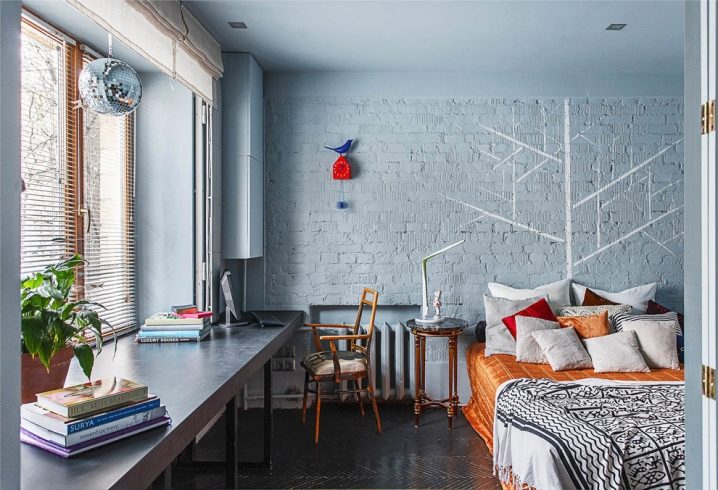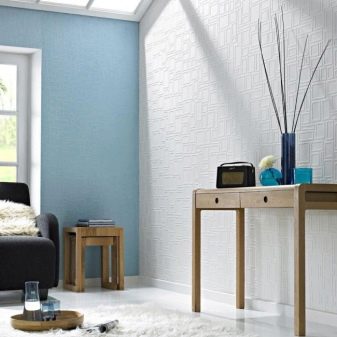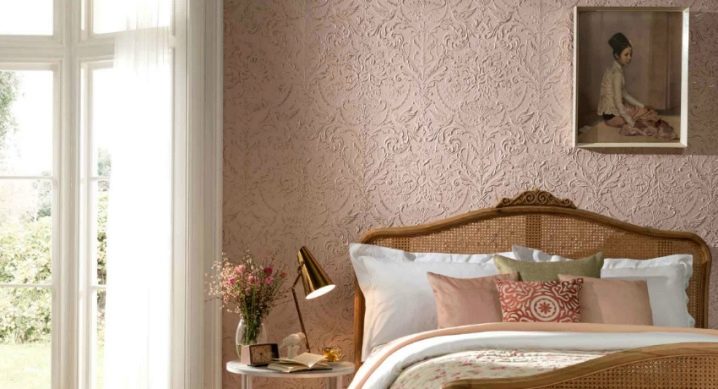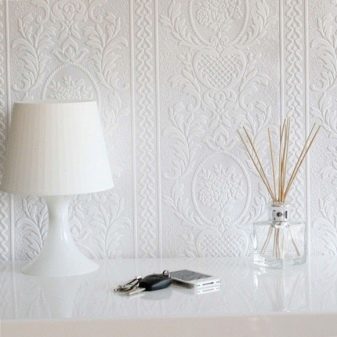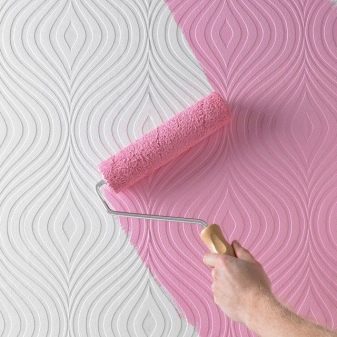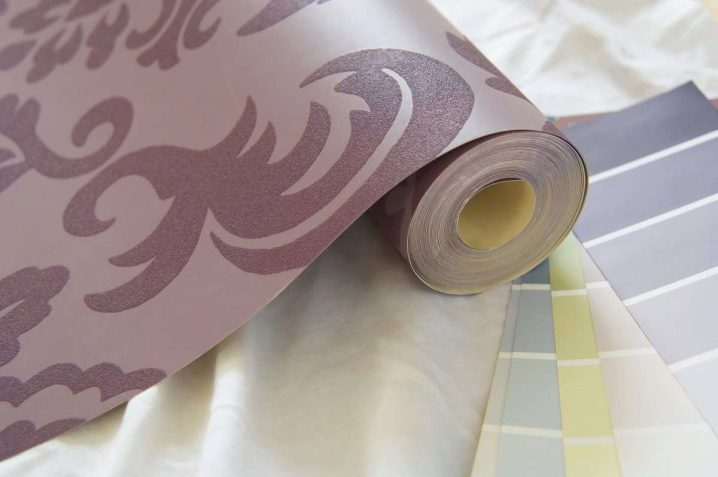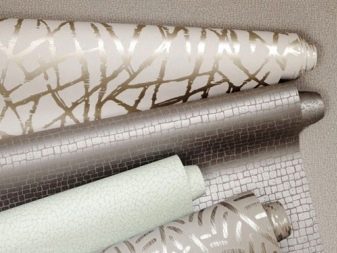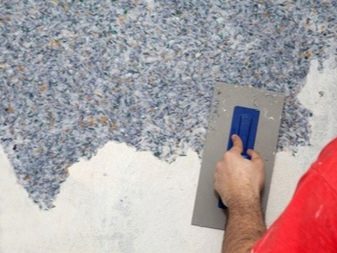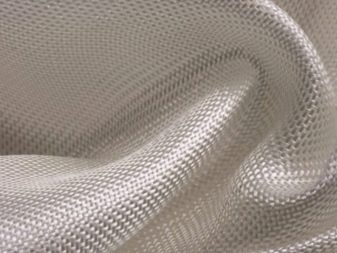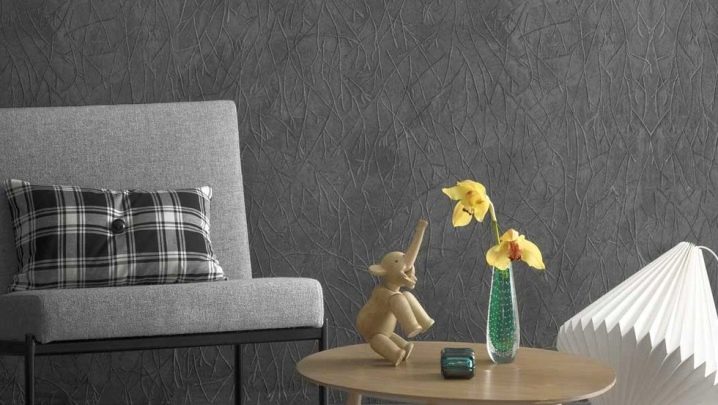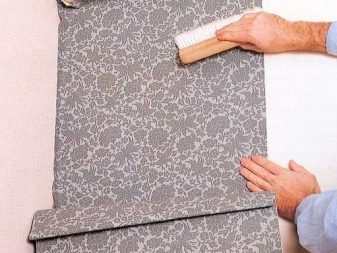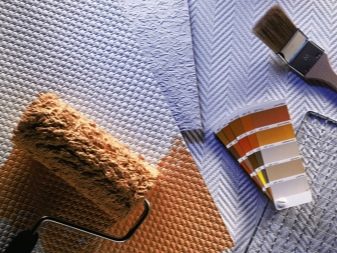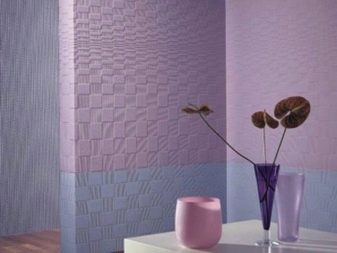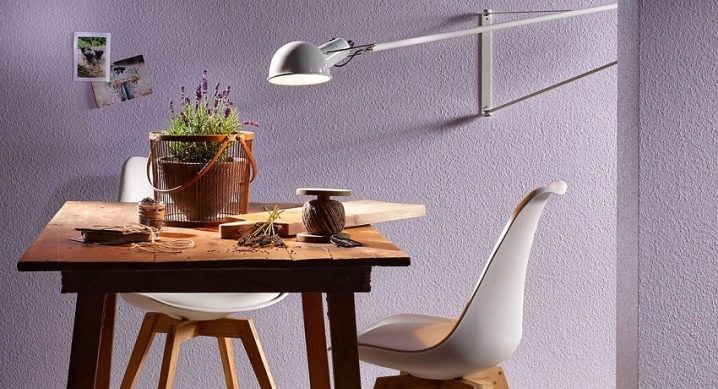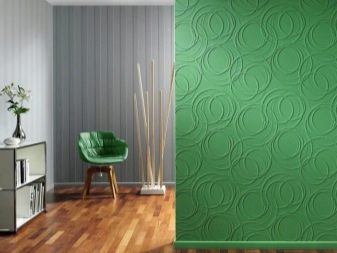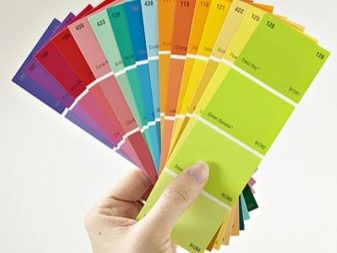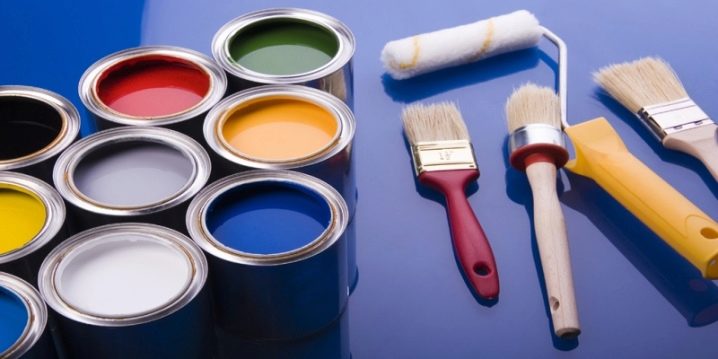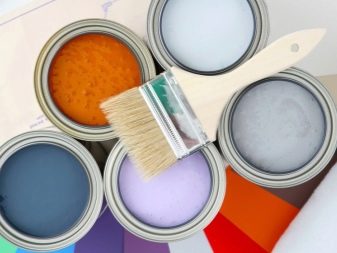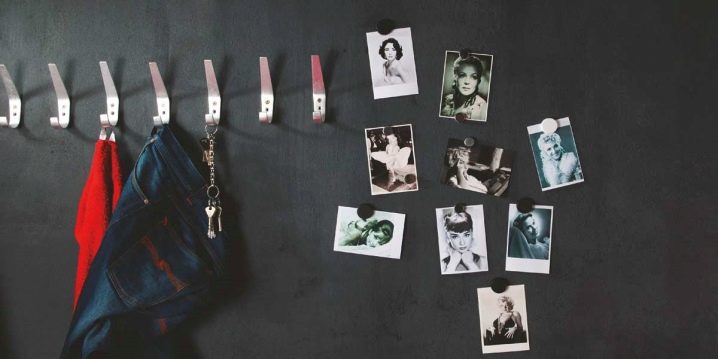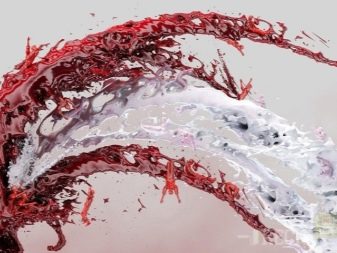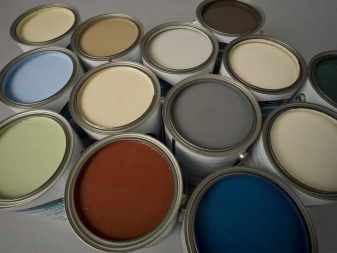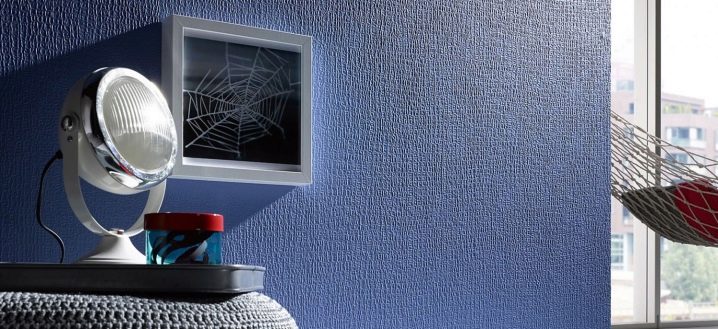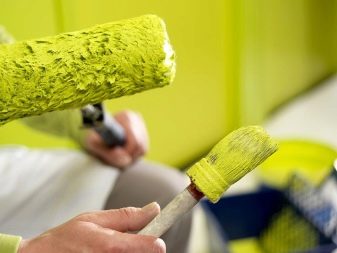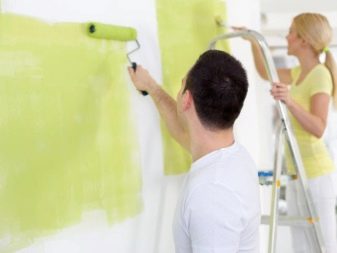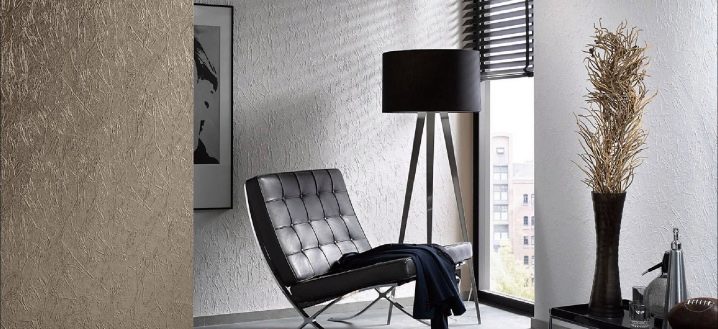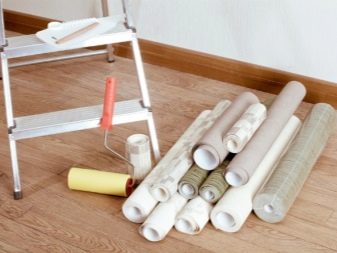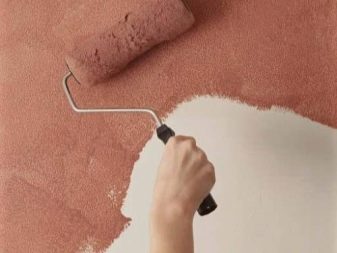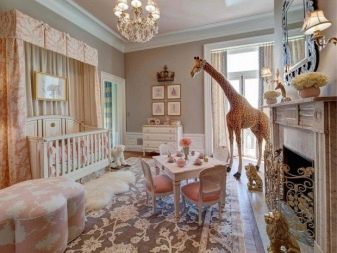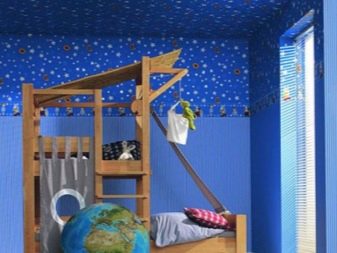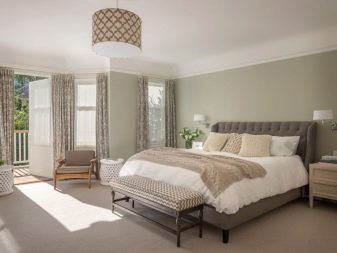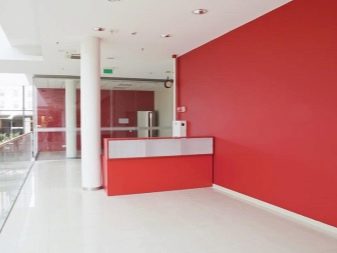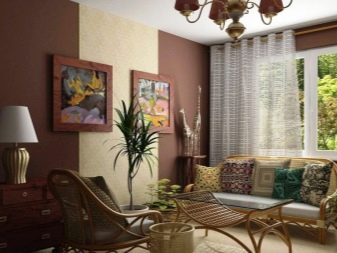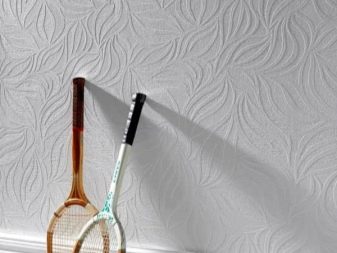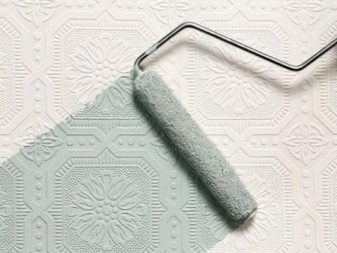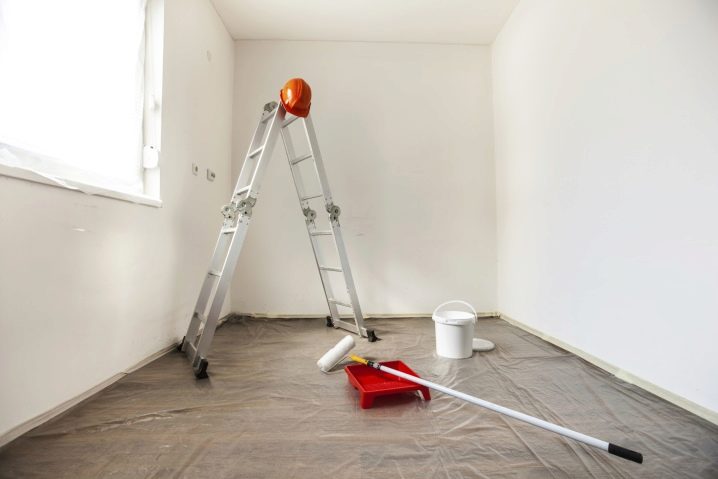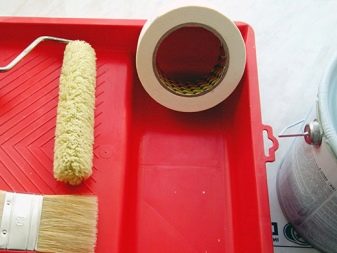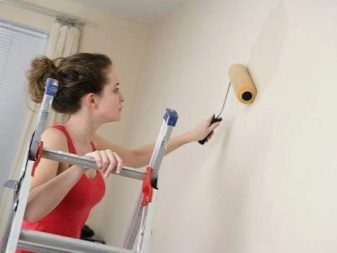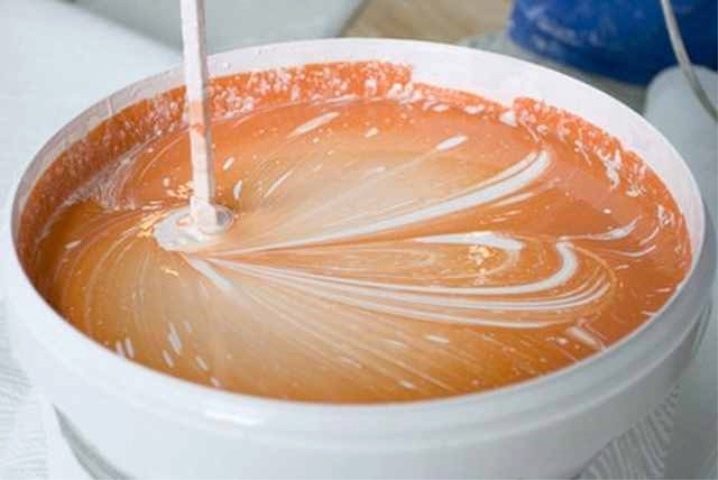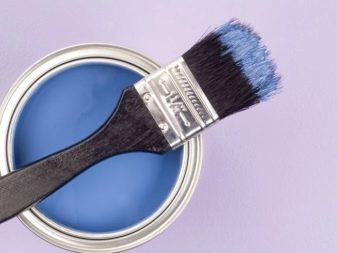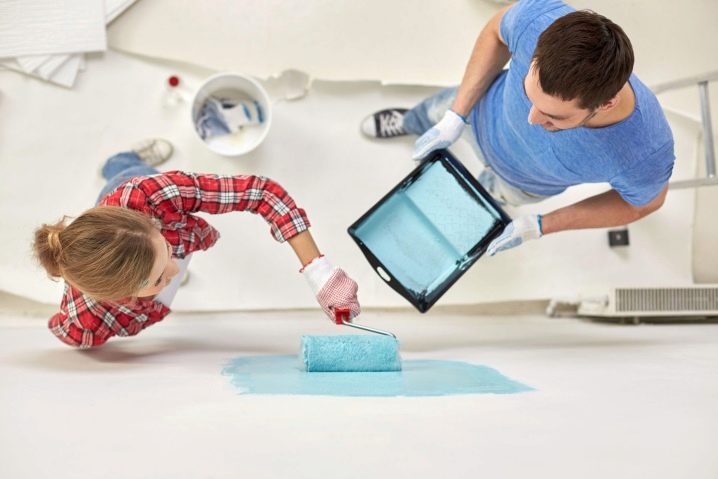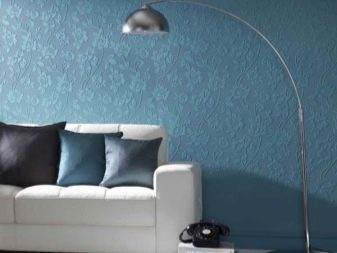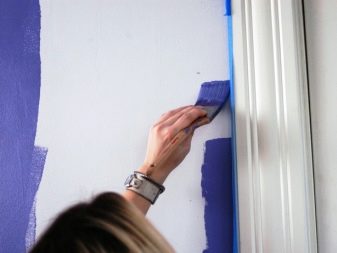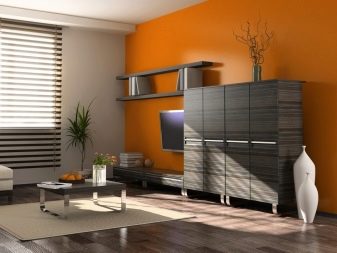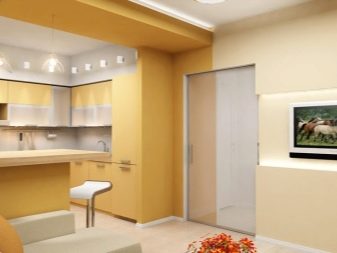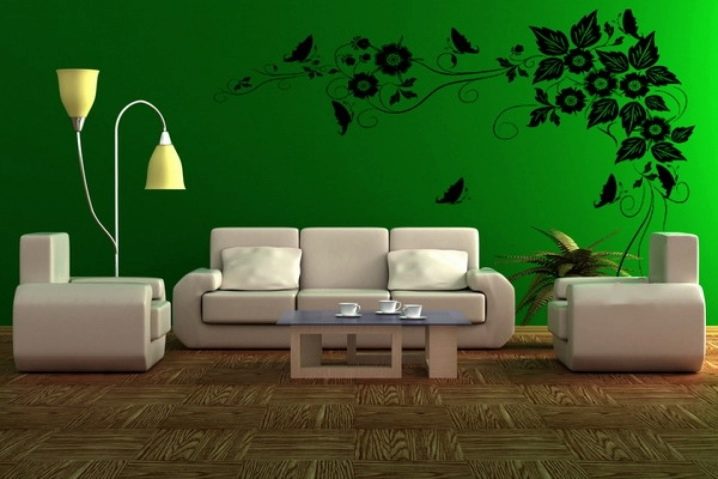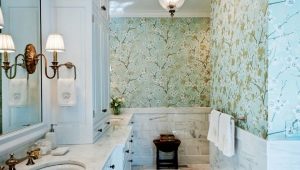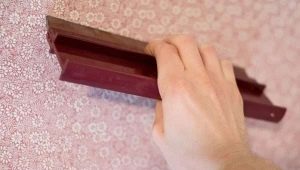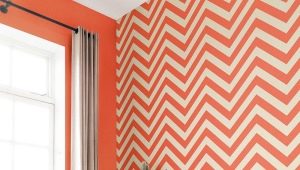Painting wallpaper: features and nuances
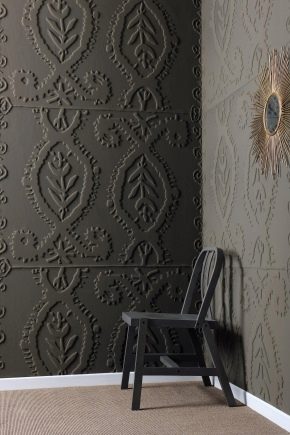
Wallpaper for painting - the dream of any designer, the opening for the builder and a godsend for many owners. These coatings make all subsequent repair work an easy task, not requiring much time and money, because they can be painted many times without the need for complex surface preparation.
Special features
For many reasons, more and more people decide to glue wallpapers, which can be repainted in the future. This repair is now at the peak of popularity. There is nothing surprising in the fact that this particular decorative material became the hero of our conversation. Why in the room is it worth to paste wallpapers intended for coloring:
- increased sound insulation;
- creating a cozy atmosphere;
- a large selection of design solutions that can be implemented;
- the organization of a protective coating on the wall;
- a large range of textural solutions.
How many times can you repaint?
An important advantage, which is typical for such wallpaper, is repeated painting. The number of stains may vary. within 10-15 times.
It is not recommended to paint the coating with a pronounced relief pattern too often. Drawing with each coloring will smooth out and nothing can remain from the relief.
Better tolerate repeated staining smooth wallpaper and fine-textured coating. The material itself in both cases will not suffer from frequent staining.
What species?
Not all wallpapers can be used for coloring - this should be well understood. Even those canvases that are intended for dyeing are significantly different. It is necessary to approach the choice consciously, with knowledge of the matter. We will tell you how such materials are called, what features need to be oriented, and we will also familiarize you with the distinctive characteristics and reveal important secrets. Consider in detail what wallpaper can be used for coloring:
- Paper Wallpaper attracts accessibility, so many people choose this option for applying pigment. This decision has the right to life, but only if two-layer wallpapers are chosen. Due to the high strength and reliability of the decorative material can withstand the process of dyeing. Conduct such experiments with single-layer materials is not worth it, so you do not have to then re-glue the walls again.
- Liquid Wallpaper can be painted, but you need to carefully select the color and be able to combine different shades. The main problem lies in the scanning of the color of the material through the pigment layer. Putting paint in a thick layer is not a worthy solution, since in this case the texture of the liquid canvases will be hidden, and the walls will be ordinary, even.
- Vinyl Although materials are created on a paper basis, they are more durable than simple wallpaper. They tolerate the application of pigment much better. The range of vinyl materials has a category of washable models. It is absolutely impossible to paint such wallpapers, as a normal result cannot be obtained.The paint will not be absorbed or at least linger on the surface, so you will get stains and drips.
- Options na non-woven base best suited for color change by applying pigment, which is why they are most often chosen. Moreover, surfaces with such a finish can be repainted repeatedly - there will be no negative effect on the wallpaper. Even old non-woven fabrics can simply be repainted, which allows significant savings on repairs.
- Glass fiber - Another good option for our case. But they are less likely to become the user's choice, because they have a high cost. But their reliability and durability justify all costs. This type of coating is created specifically for painting.
Special wallpaper designed for painting, greatly benefited from the usual decorative materials.
They can be used as ceiling finishes, and they are available in a large assortment: simple, ceiling, vertical, exclusive, with different sets of characteristics, textured.
What to glue?
The process of sticking wallpaper determines the success of the whole venture, so you need to take a responsible approach to this process, follow the technology and follow the rules. Technology sticking differs depending on the type of wallpaper. In order not to worry if the wallpaper adheres well to the surface, these application rules must be observed:
- Paper canvases do not require impregnation, the adhesive is applied directly to them.
- In the case of vinyl wallpaper, which have a paper base, impregnation is necessary. The adhesive composition is applied over the canvas and left to absorb for the time indicated by the manufacturer.
- Glass fiber does not need to spread with glue. They are applied to the wall dry, and glue is applied to the surface.
To wallpaper kept on the walls with high quality and durable, you need to learn how to choose glue. In this matter, you should focus on the weight and density of the canvases:
- Light paper wallpaper can be glued composition, which is designed for lightweight fabrics. It is based on methylcellulose.
- Heavy wallpaper will not hold on such a composition. They require a more reliable and durable adhesive material.For example, glue based on PVA.
- To work with glass wallpaper is a special composition.
- On water-based paint, you can glue wallpaper, but only non-woven. First you need to conduct an experiment on a small piece of cloth. If he is well grabbed, then you can use a similar method for the rest of the surface.
You also need to familiarize yourself with some of the subtleties of sticking wallpaper for painting, which will allow to get the perfect result:
- The base does not need careful alignment. Of course, large irregularities will have to be fixed, but minor shortcomings can be left. Moreover, it is permissible to choose a semi-gloss paint that will hide the existing drawbacks. The surface must be in the same color so that the new finish is applied evenly.
- The old coating of water-based paint can not be removed, as it is a good basis for a new finish.
- Water dispersion paint can also not be removed.
- On the oil paint can not be applied to a new decorative layer. It will have to be completely removed from the surface.
- If there is a pattern on the wallpaper, you will have to make the length of the paintings 5 cm longer.This stock will allow you to combine the cover and make the picture solid. Wallpapers that will be painted in the future should be glued to the joint. If there are places with overlap, the paint will further highlight and focus on these shortcomings.
What to paint?
As for painting the wallpaper, it is not so simple. There are important points and pitfalls that need to be sorted out in advance.
If the choice is made incorrectly, the wall decorative layer will not be strong enough, beautiful, durable, and resistant to external factors.
The following paint is on the construction market.
Water based
Such compositions lead in sales. It is easy to work with them, they are inexpensive, the range is impressive, including not only colors, but also texture (matte, glossy). Matte compositions look attractive on the wall and are able to hide minor surface flaws.
Gloss looks more solemn, but it should be applied solely on an ideal wall that does not have the slightest flaw. With water-based coloring compositions, you can easily choose the right color. In order to accurately guess the desired shade, it is necessary to make test strokes and evaluate the result.
Latex dispersion
Such paints benefit from environmental friendliness and safety. Such a composition must be quickly consumed, because after a few hours after opening the package it dries. Although the painted surface will dry for about 3 days.
Magnetic
Not so long ago, the modern building materials market began to offer magnetic paint. After its application magnets will stick to the surface. First of all, this decision will be relevant when you make children's rooms. In addition, in any other room you can select a section of the wall for the location on it of small decorative elements that will be mounted on magnets.
This paint is available in a limited range of colors. so even the tinting is impossible. Let the color in such compositions not be added, but on top of the dried magnetic paint is easily applied a layer of decorative composition of the desired shade.
Alkyd
Such paints are expensive, but reliable and durable. These compositions cover walls that are in conditions of intensive use and are subject to rapid wear.
Alkyd compounds is important to use for shopping facilities,public places and production workshops.
Paint can be applied with a brush. In this case, traces of such a tool on a dry surface will not remain. This paint is heat sensitive and even flammable, which you should definitely take into account when carrying out repairs.
Acrylic
Acrylic compositions are no less popular than the materials described above. The range of such paints is huge, starting with the area of use (for facade work or internal) and ending with various textures.
Oily
Such compositions can not be used for coloring wallpaper. Paints with solvent are especially prohibited. Such substances adversely affect the wallpaper.
The choice of paint should also be based on the type of wallpaper with which the walls are pasted. This moment is important, because everyone wants to get a high-quality and durable result:
- Paper materials and glass fiber are better treated with latex compounds that do not have a pronounced effect on the base. Water-based paints are also well suited for wallpapers with paper base.
- For non-woven wallpaper, you can choose latex formulations or use acrylic paint.The latter option is more affordable. Experienced builders cover the painted surface with varnish, due to which the decorative coating becomes moisture-resistant and immune to the conditions of intensive use. After this treatment, it becomes impossible to re-staining.
- Acrylic compositions are intended for vinyl cloths.
If you plan to make a textured surface, then multilayer staining can not be used. In this case, the texture of the wallpaper will be smoothed. For painting paintings on the ceiling, coloring materials are selected, the principle does not change. Whatever material you choose, you need to choose high-quality coloring compositions. The desire to save can lead to negative consequences, and the result will be far from expected.
Color solutions
The use of colors when coloring wallpapers is a popular trend that is actively used by experienced builders and beginners. To obtain the desired shade, color schemes are added to white aqueous emulsion paint or mixed with acrylic compositions.
Kohler is a saturated pigment,which allows you to change the shade of liquid wallpaper and coloring composition for finishing paintings.
It will be difficult for an inexperienced person to work with these compounds, but still such a process is completely accomplished. You have to spend a lot of time until you get the desired shade.
Do not be afraid to experiment. First you need to take a small amount of paint and add color to the portions. As soon as you get the desired combination, you can take up a large amount of coloring material. Hue should be constantly checked on unnecessary stretch of canvas. In this case, you can clearly see the future result.
If you do not want to experiment, take risks and spend time searching for the perfect shade, you can use the computer tinting service. A special program will carry out accurate calculations and give the right amount of color that will allow you to get the desired shade.
In order for the room to be not only original, but also harmonious, you need to carefully consider the future interior. Everything matters: the pattern on the wallpaper, their texture and shade. The market of such coatings is full, so you can easily find a suitable option, which will be implemented all the wishes of consumers.Think carefully about the texture of the decorative coating: your wallpaper will be patterned or a smooth surface will be more successful. Textured wallpaper can be with flowers, with imitation of brick, masonry, with a geometric pattern.
When choosing a shade you need to focus on the type of room and features of its use:
- Children's room requires a choice of pastel and soothing shades. For girls, you can choose peach, pink, beige, cream colors. Boys are more like blue, although many tones are universal. Children's dreams are embodied in the new form of wallpaper. They are embossed, made in the form of a large coloring. For a little artist, this solution will be most liked, because he himself will be able to design his room. The main thing is to always have bright, colorful paints on hand.
- For registration office space Often selected wallpaper, imitating natural materials. Bright and dark shades in this case are excluded, for example, red walls will not create the necessary, working atmosphere.
- To the bedroom You can choose a smooth wallpaper, as well as allowed decorative, fine texture.For tinting it is better to choose pastel colors, although dark shades can look beautiful if a decent ensemble of colors is created.
- For registration bathroom well suited volumetric textures in the wallpaper and dark colors in the color scheme. If necessary, the visual expansion of the need to use a coating with a small pattern in white.
- Living rooms provide the will of fantasy. Here you can embody bold ideas, for example, to combine two colors. If one wall is painted with one shade, and another surface is painted with another, the space will visually expand, and the room will be divided into functional zones. Combined, with a sense of style and tact, you need to choose colors so that they combine with each other and create the right atmosphere.
The existence of different technologies for applying paint allows you to get different results. For example, if you paint on the inside of the canvas, the shade will be soft and unusual. You can also combine two colors on embossed surfaces. To do this, apply one layer, wash it off from the protruding pattern and paint it in a different color using a foam roller.
Coloring wallpaper is a designer's dream. With them, you can create original interiors, embody bold ideas and repaint walls with minimal investment.
The order of work
You can paint the wallpaper with your own hands in the apartment. Moreover, it is quite simple. The whole process is described below, it is divided into several stages. Stick to this plan and painting the wallpaper after gluing will be as smooth as possible. Ink layer can be applied only on a well-dried surface. First glueing follows, then the surface is left for several days to dry. Only then can we proceed to staining.
Surface preparation
At this stage, you will need to clean the work surface, protect the floor, windows, elements of the heating system from possible drops of the coloring composition. On the surface there should be no pollution and pathogens. The wall must be not only clean, but also dry. Keep in mind that Not all wallpapers can safely survive wet cleaning. Skirting and contact of the walls with the ceiling must be protected with masking tape.
Before sticking to the wallpaper you need to turn off the power supply, dismantle outlets, switches and close the wires with plastic.
Primer
Priming wallpaper, before they are painted, you need to. This processing technology will reduce paint consumption, reduce the likelihood of staining, strengthen the fiber wallpaper. To do this, it is necessary to prepare a wide roller, brush, pan and material for application. It is better to use a latex primer material. It will additionally provide protection from moisture.
The primer is poured into the pan. Need to be able to properly type the roller primer composition. Too much of it is not required so that there are no smudges on the wall. The roller is dipped into the solution and excess material is shaken off it. The primer should dry. As a rule, it takes up to 12 hours.
Tinting
It's time to give the coloring composition the desired shade. Similar actions should be carried out once, since in the future it will be almost impossible to recreate the exact shade. Pigments are available in various forms. The most common dry and pasty options. Preparation of dry pigments is diluted with water, and the paste can be immediately added to the dye solution.
Tool selection and preparation
In advance you need to prepare a tool that will be used in the process of applying paint. You can do this work in three ways: using a roller, brush and spray gun. The last option is preferential, but it is a professional tool, work with which requires skills and experience. But the result is better and better, and the wallpaper retains its integrity.
When choosing a mechanical method at hand, you need to have both a roller and a brush. The first tool will be used for the main work, and the brush will allow to process hard-to-reach places. The roller must have a natural bristle.. It is permissible to choose a foam tool only for processing wallpaper with deep embossed texture.
Coloring tips
Apply the coloring composition on the surface should be a thin layer. There should be no influxes, divorces or other flaws on the wallpaper. A thick layer cannot be applied at one time, as it will not lead to a good result. By alternately applying layers of the coloring composition, minor flaws will not be visible and you can count on a quality result. Drawing each next layer is possible only after complete drying of the previous one. This rule applies to all cases and it is strictly prohibited to violate it.
Coloring should be carried out in opposite directions. The last movements with the roller should be directed from top to bottom. In this case, the repainting is not required, since the coloring composition will lie evenly. This will help avoid divorces and create the right visual effect.
Shake off excess paint from the roller so that they do not turn into smudges. If the smudges could not be avoided, we will correct the situation. In this case, you need to shade the paint with a dry roller. It is necessary to process the surface carefully, so that no further repainting of the surface is necessary.
Work begins with a space near the ceiling and baseboards. On the roller need to exert the same effort and to monitor the uniformity of paint application. When the entire surface is painted, you need to leave it to dry completely. Its time depends on the type of paint chosen. The manufacturer puts this information on the can with the dye composition. Also, the duration of drying is affected by environmental parameters.After fixing the first layer, you need to apply the second (similarly).
Stencil use
There are different ways of applying paint and making interesting decisions in the interior. Stencil is a unique option that allows you to turn an ordinary room into a unique space with an exclusive design and unusual design. Stencil can be made by hand or buy ready. It can be created from different materials: cardboard, metal, plastic. For sticking such elements on the surface, masking tape or spray-glue can be used. In this case, they easily peel off and do not leave marks on the surface.
It is impossible to open windows when painting and after it. The temperature should be maintained at the same level. Also, drafts and a sharp change in the parameters of the microclimate are not allowed.
The smoother the temperature, the better the paint will dry.
Options in the interior
We have already talked about how beautiful the design of the room turns out when using wallpaper for coloring. It's time to see this. The variants of using painted canvases that we have chosen will finally dispel doubts and create an irrepressible desire to apply this particular decor option inside.
This photo is a good example of a combination of two colors in the same room. One of the colors is bright, and the other is neutral, which is recognized as the correct contrast solution. They do not compete with each other, but complement and highlight the advantages that are peculiar to each of them. In this case, the hallway smoothly enters the living room, and the zoning idea is also well implemented.
It is interesting to look at the interiors, in which stencils were used. On a deep green background, a composition of black flowers looks unexpected, but very well. Anyone can make such beauty on their own.
For more information on how to paint the wallpaper yourself, you will learn from the following video.
